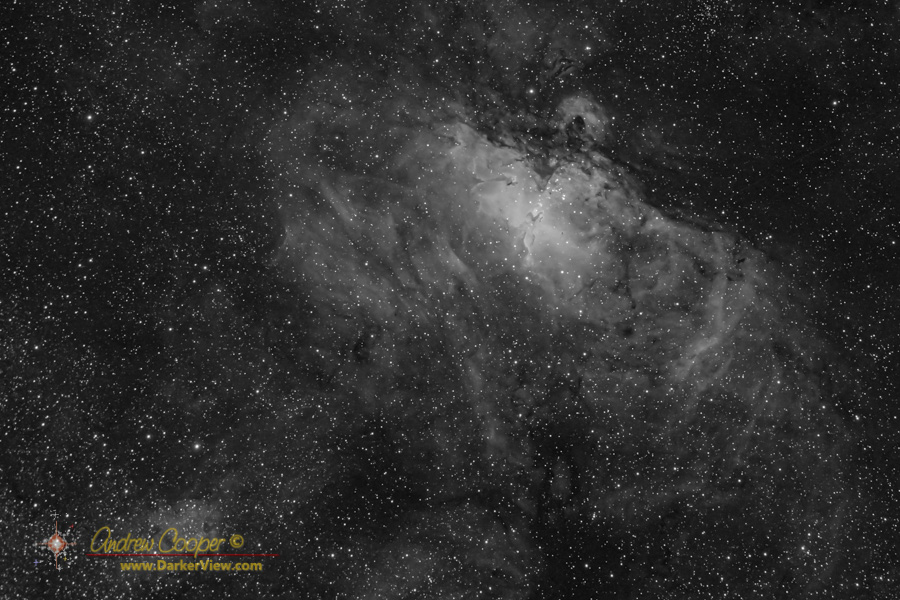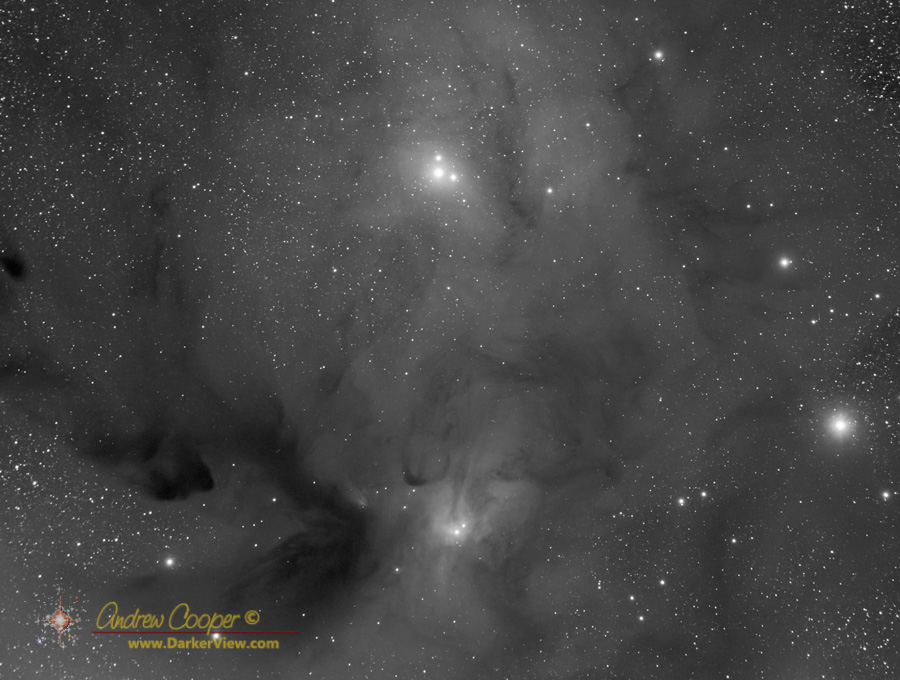
Rho Ophiuchi Region in Monochrome

When you want to see the stars, find someplace dark

I rolled the telescope out of the garage to view and photograph the conjunction of Jupiter and Saturn. It is impressive to see the two gas giants side by side like that. The photos were less of a success, with soft seeing they are not great. OK, the photos suck.
The Moon was a different story, high in the sky the seeing was much better. Since I had the camera on the telescope I shot a few photos of the first quarter Moon.
Look closely along the terminator and you can find the Lunar X, the V, and the Vallis Alpes…
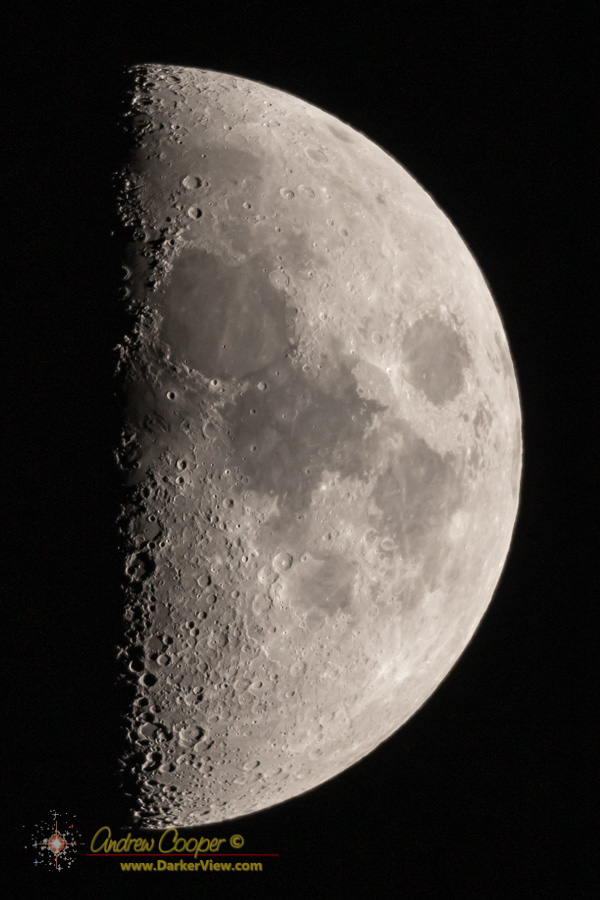
NGC7000 or The North American Nebula is found in Cygnus, just northwest of the bright star Deneb. A huge complex of glowing gas and dark dust the nebula covers and area several times larger than the full moon.
The image here is the sum of 60 individual frames, 30 at 1 minute and 30 more at 5 minutes of exposure taken with a TeleVue 76mm scope and a ZWO ASI1600mm Pro camera through a hydrogen alpha filter.
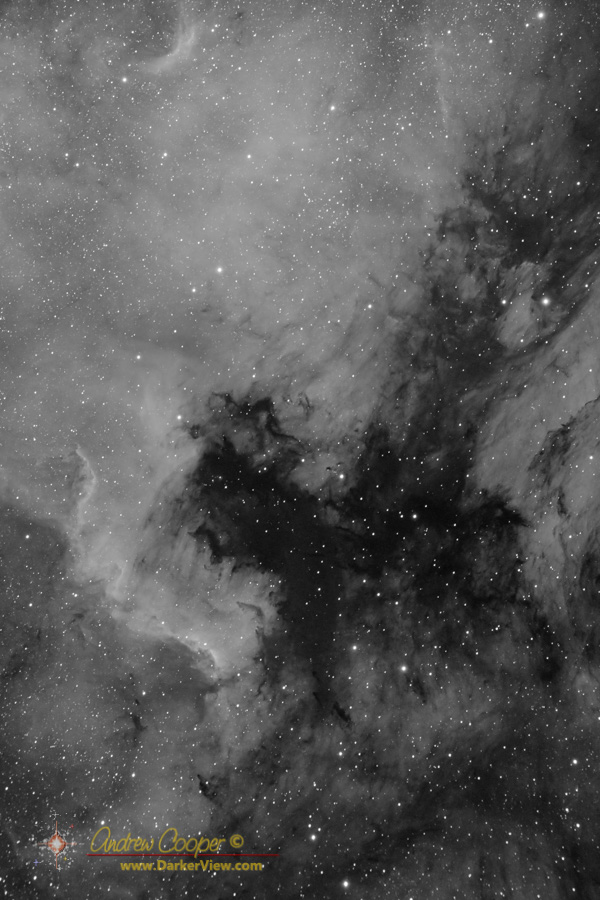
To allow a wider field of view requires changing optics. In this case putting away the TV-76mm telescope and mounting a vintage Nikkor 180mm f/2.8 ED camera lens.
The Nikkor 180mm is a classic lens, once a favorite of professional film photographers for news and portrait work. Now the lens is out of date, not autofocus, or image stabilized, a bit of very good optics left behind by technology.
Of course, autofocus or image stabilization are useless for astrophotography. With a simple adapter the lens can be mounted to a modern system and used as a fully manual lens in an application where the excellent optical quality can still be appreciated.

The Hercules Cluster is one of the best known, and as you would expect, one of the most beautiful clusters to be seen in a small telescope. Also known as M13 this is a rich globular cluster with several hundred thousand stars it lies about 25,000 light years away in the constellation Hercules.
The cluster is always worth stopping by, whatever size telescope you are using. If I am using a larger ‘scope I might try to locate the small galaxy NGC6207 located about ½° to the northeast (upper left). If I am using an even larger ‘scope like my 18″ I can also try for the challenging IC4617 that lies halfway between NGC6207 and the cluster.
The image here is a luminance image only, taken through a filter that blocks IR and allows the remainder of the visible spectrum through to the detector. To get allow capture of the fainter stars while not overexposing the core a range of exposures from 10 seconds to five minutes were combined to create the image seen here…
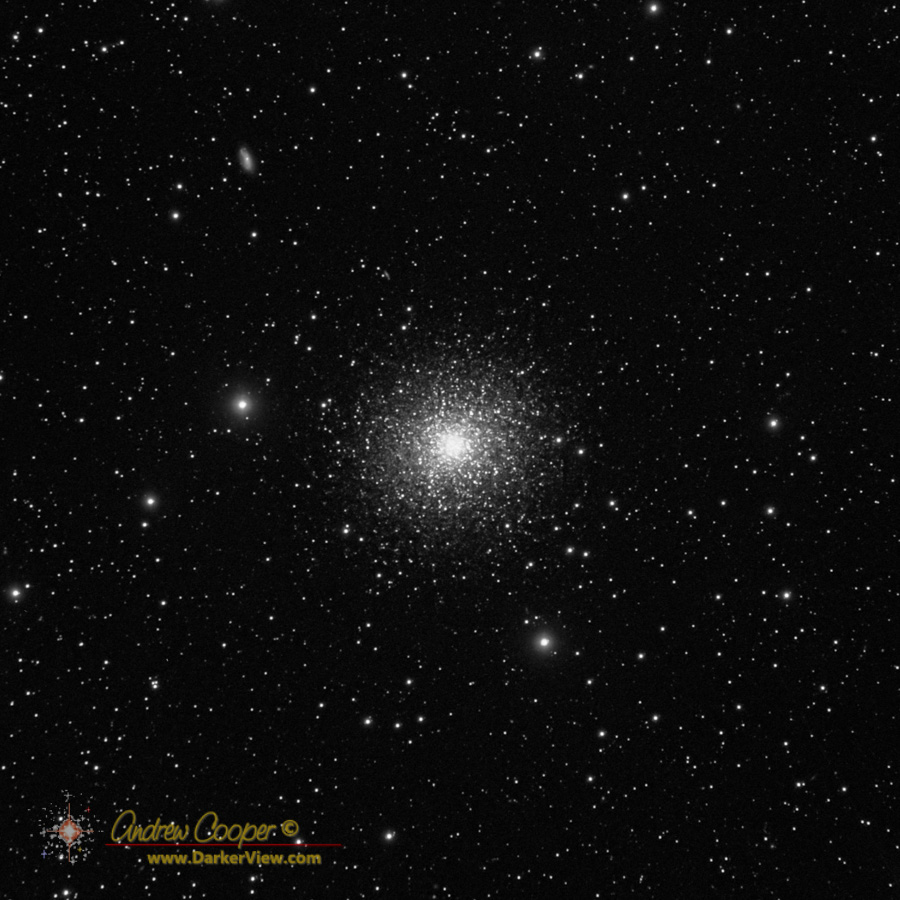
The Rho Ophiuchi region is a confused mass of gas and dust just above Antares and the head of Scorpio. This extensive nebula complex is far larger than the single frame shown here, extending far to the east into Sagittarius.
Rho Ophiuchi itself is the triple star seen here at the top center of the image, at the center of a bright reflection nebula. The double at lower center is Iota Scorpii and the star Al Niyat is on the right side. Also notable are the dark clouds of dust and gas that block the light of the stars and nebula behind creating black voids in the starfield.
This area is quite colorful, with both the blues of reflection nebulae and the reds of emission nebulae. I have gathered some color data but need more before assembling a proper color image of this region.

Just killing some time while I wait for the Milky Way to rise and to shoot my primary targets for the night. Maybe some galaxies in Leo? There are a lot to choose from, but I am setup for wide field using the TV-76mm with only 389mm of focal length. Too wide to make individual galaxies interesting, maybe a galaxy group?
The group around M95/M96/M105 should be good, it fits in the field nicely. Just shoot for about an hour before moving on the the main targets of the night. With any luck those wisps of evening clouds hanging about will go away as well.
There are a number of nice groupings of galaxies in Leo… The Leo Trio (M65, M66, and NGC3628), and this group around M95 and M96, and a number of fainter galaxy pairs and clusters to chose from.
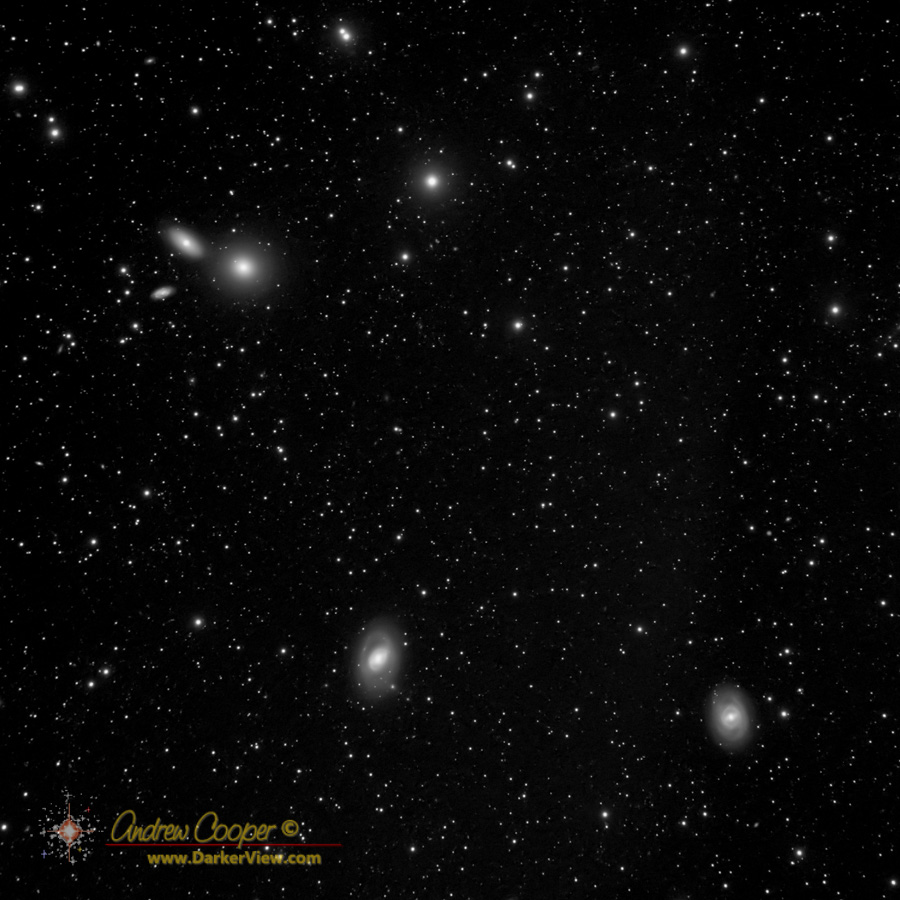
I have been processing more images from this last week. This one is another classic nebula, the Eagle. The nebula, also known as M16 or NGC 6611 can be found in thick regions of of our galactic core towards the constellation of Serpens.
The eponymous eagle can be seen near the center of the brightest region, a structure of darker material likely held together by the gravity of objects inside it. In this case those objects would be forming stars, or protostars, the result of the dust and gas being drawn together under the influence of gravity.
I have a full set of color filters, once I have had fun re-doing many of these classic nebulae in hydrogen alpha I will probably begin doing full color versions. Color takes a lot more exposure time and much more processing. There are techniques to add H-alpha data to an RGB image to get more definition in the nebula structure, something I have not done and should probably figure out.
